Provence Côte d'Azur
Take full advantage of the French Riviera, its beautiful beaches, the wonderful climate and the culinary delights.
Beautiful local sights and attractions
Discover a selection of the most beautiful places and attractions in Provence Côte d'Azur
History
The name Côte d'Azur was first used in 1887 by the writer Stéphen Liégeard, who published his book La Côte d'Azur in that year. There is no official ...
Read MorePopulation
The number of permanent residents of the Côte d’Azur, including the coastal areas of the Alpes-Maritimes and Var departments as well as Monaco, is est...
Read MoreClimate
The Côte d'Azur has a Mediterranean climate, with the following average temperatures per month: January 10 February 10 March 12 April 14 May 17 ...
Read More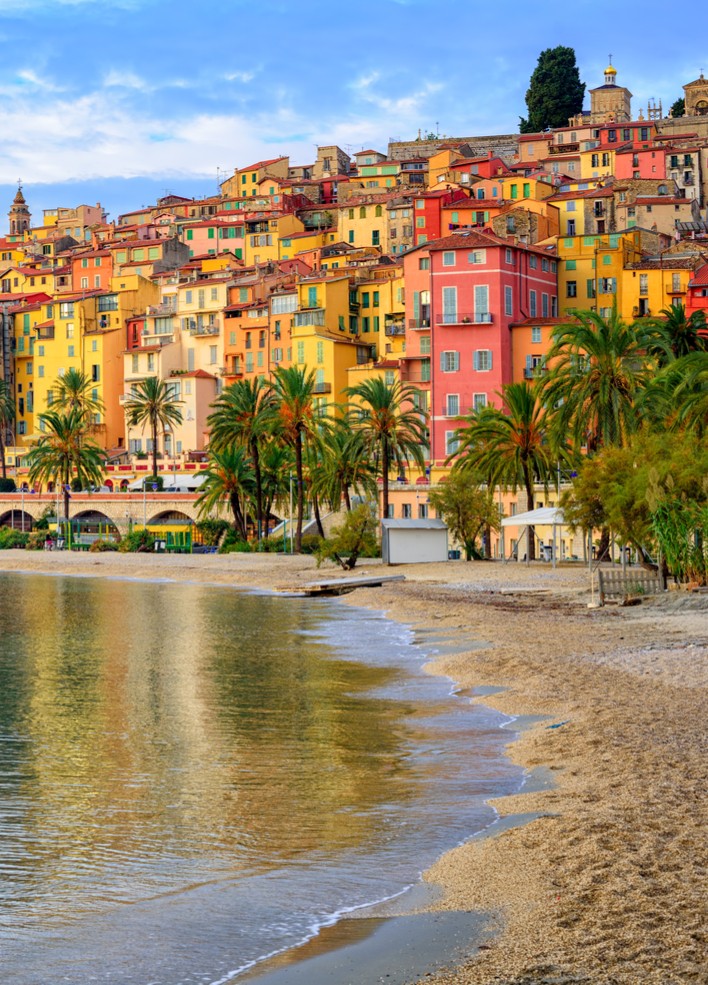
THE MAGIC OF THE CÔTE D'AZUR
The wonderful Côte d'Azur (the French Riviera) is situated on the south-eastern coast of France, fringed by the blue waters of the Mediterranean. Bathed in warm golden sunshine for more than 300 days a year, it is famous for its beach resorts including Saint-Tropez and Cannes, its numerous pretty villages, beautiful landscapes, vineyards and national parks. The Côte d'Azur has a cultural inheritance that can be traced back to when it was first inhabited in prehistoric times. Primitive tools have been found in the Grotte du Vallonnet near Roquebrune-Cap-Martin. In the 7th century BC Greek sailors established a series of small trading harbours at Pierre-de-L'Amannare (Near Hyères), Antipolis (Near Antibes) and Nicaea (now Nice). There is a rich legacy of Roman monuments with the greatest concentration in Fréjus including an amphitheatre, walls and aqueducts. There is another amphitheatre at Arles and several lovely bridges including the one at Bonnieux. The area is rich in medieval monuments too, including pretty churches, cobbled streets and castles. Because of its close proximity to the Italian border, there are Italian influences to be found in architectural styles and buildings such as Villa Ephrussi and Chapelle Notre Dame des Fontaines. The area remained relatively poor with small villages whose residents earned their living from the sea and their olive groves. In the 18th century, the first affluent visitors arrived and settled as the lovely climate was found to be beneficial to their health. In 1834, the First Baron of Brougham & Vaux began to spend his winters there and many of his friends did the same. A Scottish doctor prescribed 'climato therapy' – a 'change in climate' to his aristocratic patients and it was soon found that the Mediterranean climate was perfect for the wealthy suffering from tuberculosis.
Brigitte Bardot and Saint-Tropez
The arrival of the first railway in 1870 brought with it the aristocracy from all over Europe. Ten years later, there was a community of about 25,000 British people living in Nice alone! Soon the Côte d'Azur became the playground of royalty too, including Queen Victoria who was a regular visitor and the Prince of Wales who loved the Club Nautique in Cannes. Interestingly, once he was crowned Edward VII he never visited the South of France again! French entrepreneurs saw the potential of promoting the area as a travel destination and the Prince of Monaco (a small independent principality on the south coast) built the first of many casinos in Monte Carlo. In 1956, the beautiful French actress Brigitte Bardot was cast in a film that was to be shot in Saint-Tropez. The film Et Dieu Créa la Femme… turned Brigitte Bardot into a world-famous sex symbol and put Saint Tropez ' firmly on the map' as THE holiday destination - especially for the jet set. Suddenly, by the 1960s anybody who was anybody, wanted to be photographed in Saint Tropez or Cannes and the harbours were filled with luxury yachts! The area became known for its glamorous beaches where topless sunbathing was permitted, its luxury hotels and flamboyant nightlife. Côte d'Azur is still much-loved by the rich and famous and Brigitte Bardot and Elton John are amongst the many who have houses there. Today, the Côte d'Azur is an established holiday destination for everyone as there is a good selection of villas and holiday homes as well. The Côte d'Azur is a major nautic centre and has several popular ports for cruise ships. It is said that 50% of the world's super yachts have made at least one trip to the area. Cruise ships regularly arrive at the port of Toulon, which is also the home port of the French Navy. Nice and Monaco are also popular destinations on cruise itineraries.
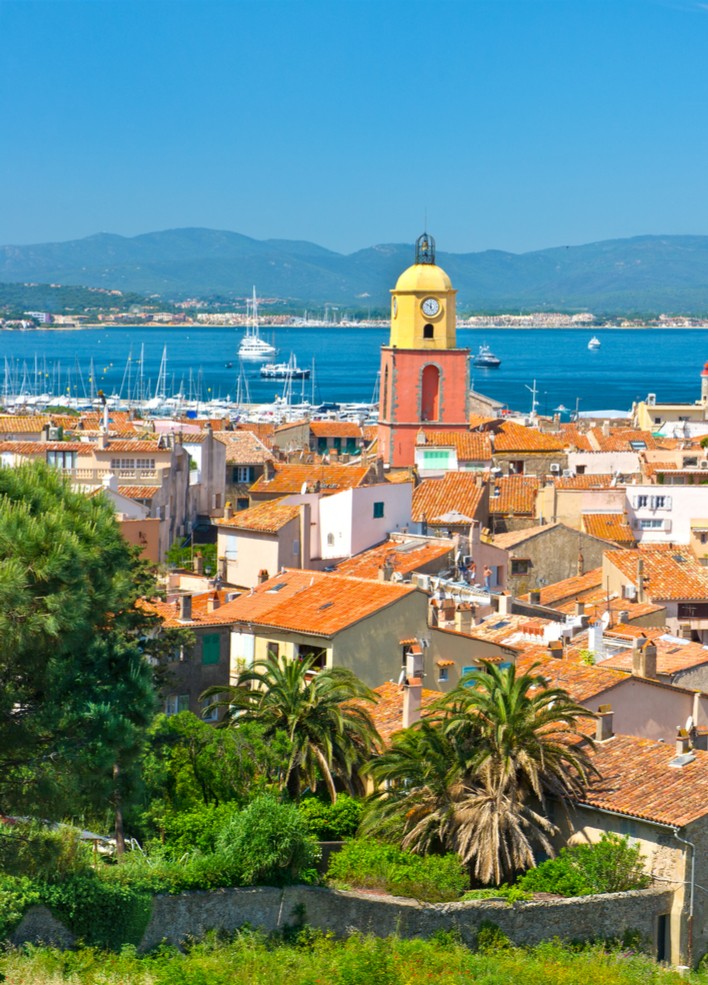
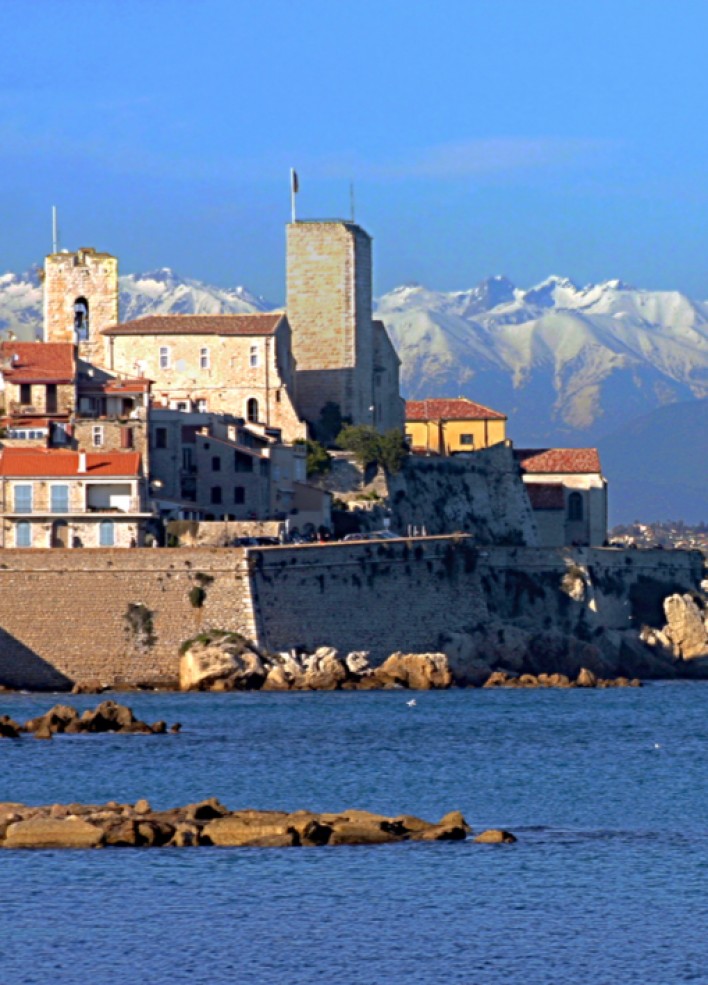
Famous artists
There is another very different facet to the Côte d'Azur. Since the 1960s it has developed as an important conference and convention centre, hosting a wide variety of annual events that draw delegates from all over the world. The Sophia Antipolis Business Park is well known as a high-tech and business park with an excellent research centre. The business park was founded in 1969 and is located between Cannes and Antibes. Over the years, the colours and seasons of the Côte d'Azur have attracted many painters including Van Gogh, Monet, Rénoir, Matisse, Picasso and Chagall. Henri Matisse explained that it is a very special place to paint as the light in the Côte d'Azur is unique as it is 'soft and tender despite its brilliance'. There is plenty of places to inspire including the Mediterranean coast which has incredible luminosity and contrasting colours in the landscapes with glorious fields of lavender, lush citrus trees and olive groves. The first artists settled in the 19th century. Claude Monet lived and painted in Antibes. Picasso moved to the village of Mougins for the final 12 years of his life. Rénoir made his home in Cagnes-sur-Mer in the hope that the climate would ease his rheumatism and Matisse was recommended to move to Nice by his doctor when he developed pneumonia in Paris in 1917. Matisse spent most of his life in the old town of Nice before moving to the suburb of Cimiez where he died in 1954. Paul Cezanne, the impressionist, was born and lived in Aix-en-Provence and painted many of the local landmarks. Writers too found that the Côte d'Azur was the perfect place to awaken their creativity. The area was first called 'Côte d'Azur' by the poet Stéphen Liégard. Louis Stevenson, Dickens and Oscar Wilde all visited the area. F. Scott Fitzgerald sailed across the Atlantic to settle in the Côte d'Azur with his wife and daughter.
Beaches and vineyards
They chose a house on a pine-clad hillside in Saint Raphael where he wrote 'How to Live on Practically Nothing', 'Tender is the Night' and The Great Gatsby. Film maker Jean Cocteau fell in love with the area and one of his favourite places was Villefranche-sur-Mer where he settled with the actor Jean Marais. There is a museum of his work to be seen in Menton. There have been many writers who have visited the Côte d'Azur and have written about it including Ernest Hemingway in The Garden of Eden, M. Somerset-Maugham in The Razor's Edge and Jilly Cooper in Imogen. Even today, writers, poets and artists are drawn to the area and there are numerous small art galleries and open-air exhibitions in the different villages. Certainly the landscape is very diverse. The coastline features large sweeping beaches with fine white sands, pretty fishing harbours and craggy cliff tops that plunge into the sea. Further inland. there is plenty of agriculture with fields of crops, market gardens with glistening tomatoes and deep purple aubergines, citrus groves and olive groves. There are areas of vineyards producing excellent wines. In contrast, there are huge areas covered in maquis heathland and large pine forests. There are wild flowers like mimosa and lavender, wild herbs too and vibrant cultivated flowers. The three key places in the area are Nice (the largest) Cannes and Saint-Tropez and although they do get busy in the summer months, it is fun to visit them because they are just so famous – but wear sensible shoes because the best (and only) way to discover each is on foot! The perfect way to explore Nice is to climb up through the narrow streets to La Colline du Château (Castle Hill), enjoy the panoramic views and then work your way back down into the Baie des Anges (the Old Town), which is perfect for shopping, the flower market and a traditional Provençal meal.
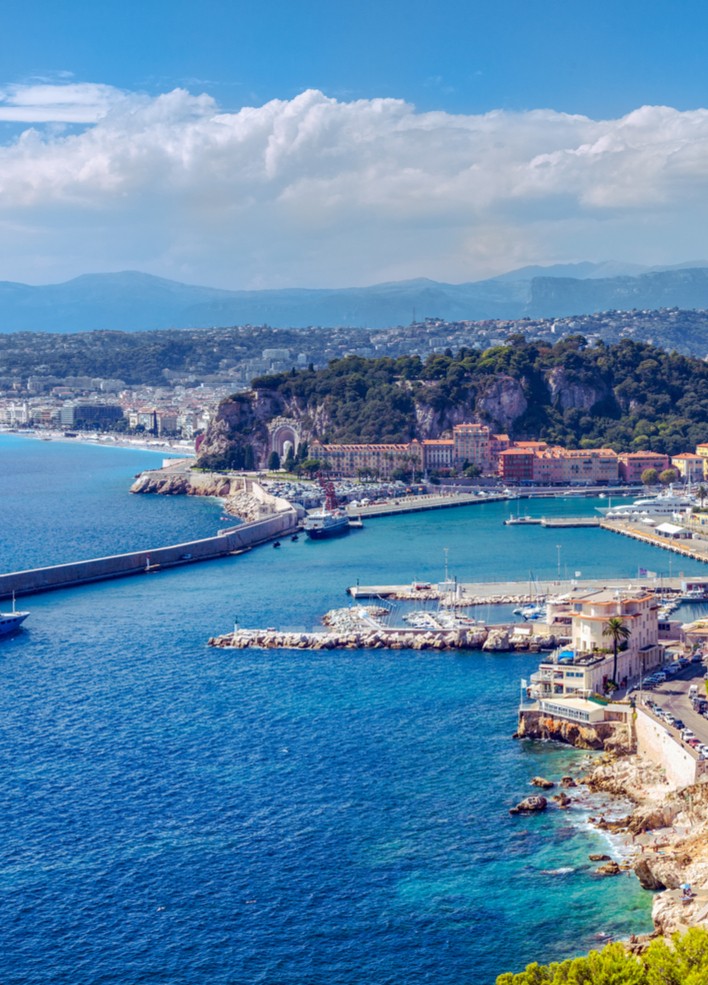
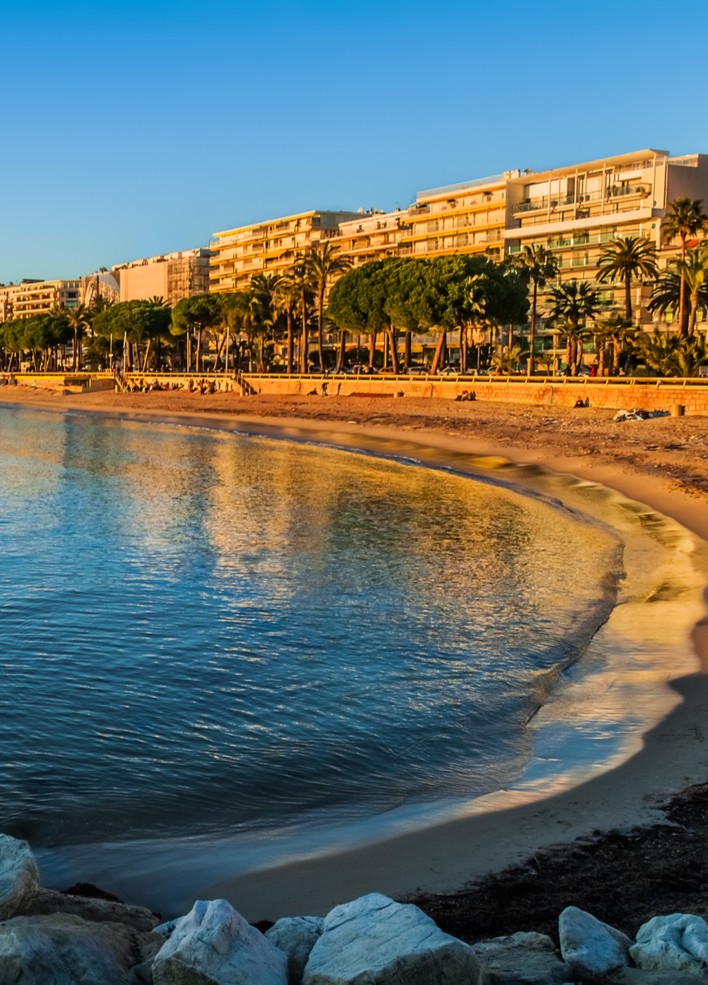
Cannes
Promenade des Anglais is the world-famous promenade overlooking the coast and those 'in the know' head for Coco beach for great swimming, diving and jumping off rocks! Cannes is known the world over for its international film festival and everything in the town seems to glitter as it has upmarket shops, upmarket fine dining and luxury hotels. It still draws the rich and famous like a magnet! There is something special though about walking along the Boulevard de la Croisette and onto the beach, stretching out on a lounger and ordering a cocktail or a glass of champagne! Saint-Tropez is still the most iconic of the three places. The old town is small, quaint and worth a stroll as it is very popular with the super trendy! After all the exploring, when you are ready to relax, head for Pampelonne Beach as it is one of the very best. There are plenty of other coastal highlights to explore including Bandol with its excellent vineyards and Cassis which is a small fishing port that marks the entrance to Les Calanques – dramatic steep coastal gorges that plunge into the vivid blue waters of the Mediterranean. Inland, there are just so many lovely villages to explore where little has changed in generations so the best way to choose where to visit is definitely over a cup of coffee in a street café, or over a glass of wine watching the sun go down. Good food is essential to a good holiday and the traditional Provençal dishes are delicious, the fresh fish and seafood excellent and the local wines, memorable. There are restaurants to suit every budget and a good recommendation is to do like the French do and look for restaurants offering 'Le Plat du Jour'. This is a set menu of several courses (and often with a carafe of house wine) that is really well-priced.
Great holiday choice
For those who have rented a villa, what could be nicer than wandering around the local market buying fresh fruit, vegetables and olive oil and preparing your own meal to enjoy in the sunshine? The Côte d'Azur is a great holiday choice all year through as it has a filled calendar of events including the Mimosa Festival, the “Citron” (lemon) Festival in Menton, the Nice Carnival, the International Film Festival in Cannes and jazz festivals in Cannes and Juan-les-Pins. For those who love water sports there is kite boarding, windsurfing, sailing, diving and fishing and inland there are walks to enjoy, great cycling routes, rock climbing and caving. For those who enjoy doing very little, there are stunning sandy beaches to stretch out on and beautiful coastal views for sitting with a good book. The climate is good all year through. The spring and autumn are warm and sunny, but not as hot as the summer months and the winter is brief and mild. Many of the larger towns now have good Christmas Markets too. Like a large wooden chest, overflowing with treasures, there really is something for everyone to enjoy in this stunning corner of France!
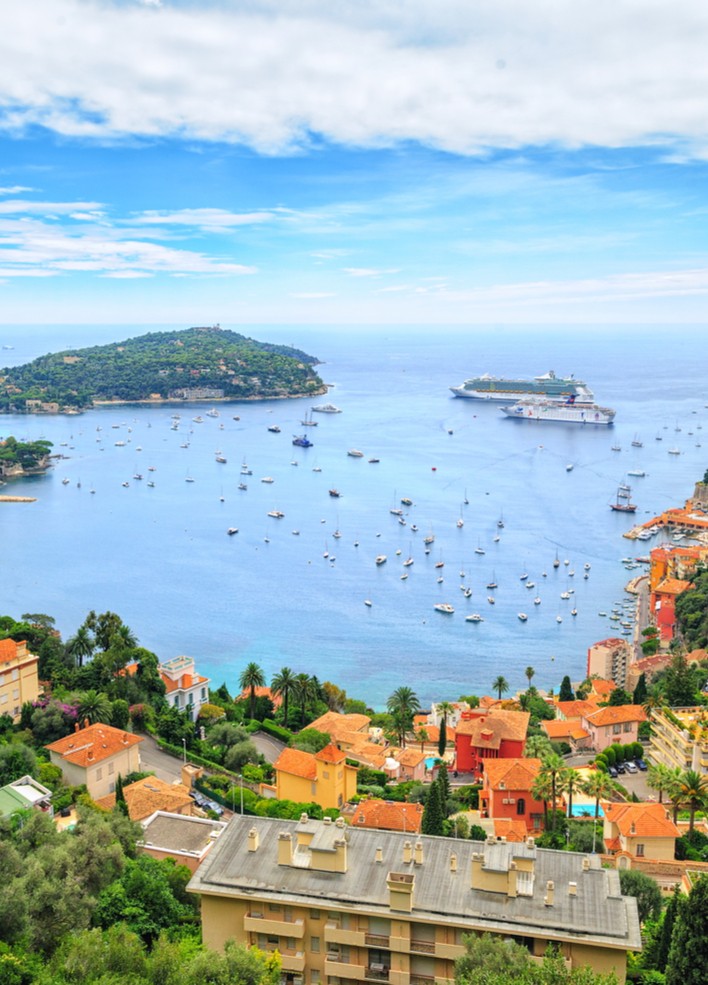



 EN
EN  NL
NL
 DE
DE
 FR
FR
